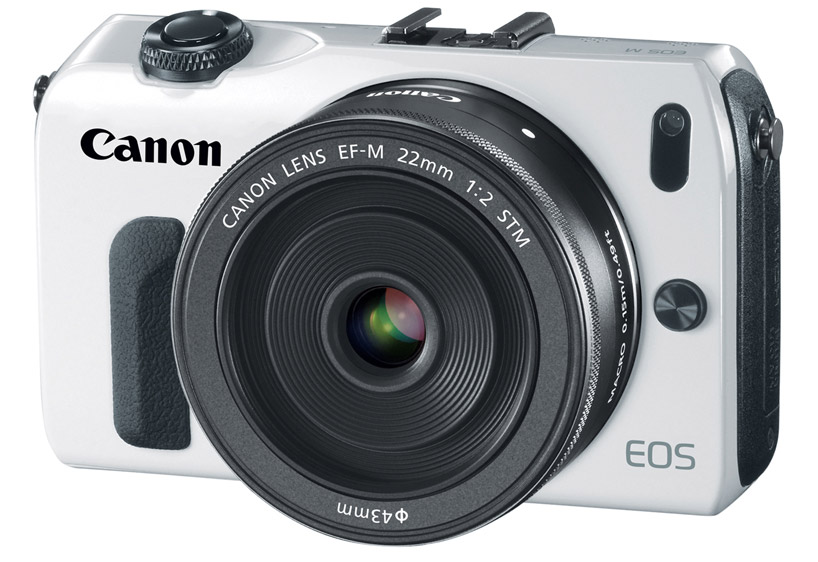It’s been a long time coming, but Canon has finally arrived on the Compact System Camera (CSC) scene with the impressive EOS M. Prior to this new model, Canon was the last remaining major player in the camera manufacturing industry not to have an offering in this class. The EOS M is generating a lot of buzz among both new and experienced photography enthusiasts and professionals, and not solely because this is Canon’s first CSC, but what does it have to offer that’s any different from its competitors?
Sensor and Processor
For one thing, the EOS M shares a lot of its internals with the Canon 650D, which was released a little earlier. It’s got the same 18mp CMOS sensor and Digic 5 processor, meaning we’re talking about a full-sized DSLR sensor and image processor that has been crammed into a smaller mirrorless body. This is unlike some popular CSCs that make use of a smaller sensor. In addition to all that crisp detail, the Digic 5 processor blesses the EOS M with an ISO sensitivity of 100-12,800.
The Lens Mount
While the EOS M utilizes the same-sized sensor, the new EF-M mount has been constructed so that the lens can sit closer to the sensor. This being a mirrorless system, there is no mirror to get in the way between the sensor and the end of the lens. Existing Canon DSLR owners who have invested in a set of lenses shouldn’t be turned off by this though. Canon is also releasing an adapter so that EF and EF-S lenses can be mounted as well.
The Lenses
The EOS M will come with either the EF-M 22mm f/2.0 STM (35mm equivalent focal length) or EF-M 18-55mm f/3.5-5.6 IS STM (28.8-88mm equivalent focal length). Most enthusiasts will probably go for the pancake 22mm lens because of its more pocketable size, wider maximum aperture setting, and fixed focal length. On the other hand, the 18-55mm EF-M lens is smaller than the current 18-55mm EF-S lens, so either lens will be significantly less bulky compared to an equivalent DSLR like the 650D, or its predecessor the 600D.
More Features From the 650D that Made the Transition
When the 650D first came out, there was a lot of speculation that the technology of that user-friendly DSLR would soon see itself inside what would possibly be Canon’s first CSC. It turns out the speculations were correct and aside from the sensor and processor, the EOS-M has also taken the 650D’s hybrid autofocus system for live view, albeit, on a more permanent basis since the EOS M doesn’t have a viewfinder. The autofocus is a hybrid of phase /contrast detection so that it is both fast AND accurate, rather than compromising on one or the other. This 2-stage system is supposed to be faster than other AF methods in live view, however it is still noticeably slower than if you were to use a viewfinder.
The EOS M also took the 3 inch capacitive touchscreen from the 650D, allowing for a more user-friendly interface that is designed to educate rather than intimidate the casual enthusiast. You can simply swipe through menus, pinch-to-zoom on photos, and other things we have come to take for granted on the touchscreens of our smartphones and iPod Touches. While the lack of physical controls might turn off the more experienced professional, navigating through the touchscreen menus is such a smooth experience that it shouldn’t take long for anyone to get used to.
Other Features
One possible knock on the EOS M is that it doesn’t have a built-in flash. Canon did this in order to keep the body as compact as possible and because they believe that people are relying less and less on flashes since most DSLRs and CSCs are capable of high ISO settings. Instead, one can attach the included new external flashgun, the Speedlite 90EX if you do happen to need the flash. It’s not the brightest flashgun out there, but you can always buy another more powerful one if you really need to. Thankfully, all of Canon’s current Speedlites are compatible with the EOS M. Another knock is that surprisingly, the EOS M isn’t as capable of shooting continuously as the 650D, considering they share the same image processor. Rather than the 5fps rate of the 650D, the EOS M is slightly slower at 4.3fps.
Pricing
The EOS M will retail for $800 for the 22mm kit and $850 for the 18-55mm kit in the States. Who knows what the pricing will be when it gets to the Philippines, but if you are going to make an estimate, do make room for any import dues that are likely to be tacked on to the final price.
Who is the EOS M For?
While there are plenty of solid entry-level DSLRs aimed at the photography novice, many enthusiasts are still intimidated by the knobs and dials that are common on this class of camera. The EOS M is aimed at the casual enthusiast who appreciates the ability to have manual control on virtually every aspect of their photography in a package that isn’t quite as forbidding. It is perfect for those who are looking for a great secondary camera, especially if they have amassed a collection of EF or EF-S lenses. It’s also a great camera for those looking to transition from point-and-shoot compact cameras but aren’t ready to get a DSLR just yet.




